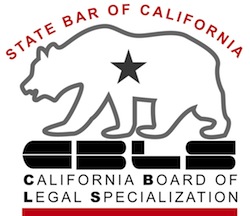
Business people usually incorporate their business to create a barrier between themselves and the debts of the business. They hope to insulate themselves from possible financial failure of the company.
But all too many entrepreneurs stop working on the problem when the corporation is created. Failure to attend to the myriad of next steps can leave gaps in the protections.
Let’s walk through what needs to be done after the articles of incorporation (or articles of organization for LLC’s) to incorporate your business. You need all of these factors to be aligned to get maximum protection for your personal assets.
While I’m going to frequently use “corporation” for the balance of this piece, the principles apply equally to LLC’s.
Organizational documents
Articles of incorporation or organization create the shell of a legal entity. But they need more. Corporations must have
- bylaws,
- officers, and
- shareholders.
LLC’s have operating agreements instead of bylaws and members instead of shareholders.
These rules of the road need to be committed to paper, signed and saved.
Corporations need to actually issue shares to the owner or owners so it’s clear who owns the entity and in what proportion.
And, importantly, if you are incorporating to operate an existing business, you have to actually transfer the business assets to the entity.
Governmental identity
States require that each artificial entity, like a corporation, correctly file with the state to let the world know who is the entity’s “agent for service of process“. The agent is the person or separate entity authorized to accept legal documents for the entity.
Corporations need a tax ID number, akin to a person’s Social Security number. That tax ID will be used to file tax returns, open bank accounts, and handle payroll.
Depending on the business and the locale, the entity may need a business license.
Contractual dealings
To effectively insulate the business owners from the debts of the corporation, the business has to forge its own business relationships, in its name, not the name of the shareholder. That means the premises lease, the vendor accounts, the phone number, and the professional representation must show the corporation as the party.
The other party to any business contract may require the owners to guarantee the deal, making both corporation and its owner responsible for performing the contract.
Owners must then make a decision about whether agreeing to be personally liable is worth the risk.
Interfacing with your entity
The goal of incorporation is to create a separate legal person, the corporation, who has its own legal rights and obligations. Separateness is key.
So owners, members, and managers must treat the corporation as a separate person. The corporation’s money is not the shareholder’s money; it’s the corporation’s money, and the creditors of the corporation have a right to see that the corporation is not just a slush fund for the owners.
So, if you lend money to the corporation, create a promissory note for the debt. If you borrow money from the corporation, be sure to execute a legally binding promissory note. Carry the note on the corporation’s books.
If you have a business credit card that the corporation services, don’t charge personal expenses to the business card. Don’t use corporate funds to pay your personal expenses; if you need money, the corporation writes a check to you, and you write the check to your creditor.
At the heart of this principle is this: if you don’t honor the separateness of the entity, how can you expect others, including the law, to see the entity as distinct from you?
How identities get scrambled
When you see the number of touchpoints in creating and operating a corporation, it’s easy to see how steps get missed.
You’re eager to open the business, or incorporate an existing business. It’s more interesting to run the business than it is to shuffle paper and deal with bureaucracies.
But it pays off. Or rather, it can save your personal bacon if the business doesn’t pay off and craters.
The toll of sloppiness
Debtor/creditor law talks about “piercing the corporate veil” in actions by corporate creditors to reach the shareholders.
It’s an interesting academic exercise, but in the real world, it’s much more likely that the business people have created the door for creditors to march right through. And those creditors can include the IRS when the SSN’s of owners are associated with the business tax reporting.
Further, relief in bankruptcy is limited or far more expensive when the business assets and liabilities are scattered between entity and owners.
Run down the check list and see where your entity stands now, before it’s critical.
More on incorporating a business
Who’s protecting whom? The unexpected benefit





